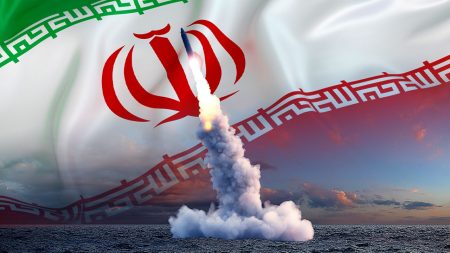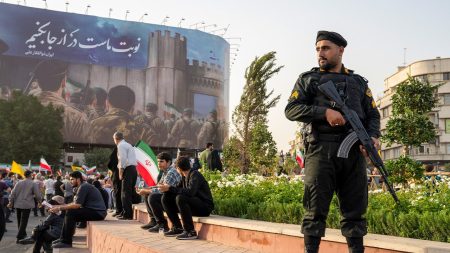Hamas’s European Threat: A Network Uncovered
The Sprawling Terror Infrastructure
Recent coordinated counterterrorism operations across Europe have exposed what Israeli authorities are calling a significant Hamas network actively preparing attacks against Israeli and Jewish civilians throughout the continent. This extensive operation, involving the Mossad and multiple European intelligence and law enforcement agencies, has revealed what Israeli officials have dubbed the “Hamas Octopus” – a complex system of operational cells, weapons caches, and logistical channels positioned to launch attacks on command. The discovery paints a concerning picture of Hamas’s ambitions beyond the Middle East conflict zone, suggesting a strategic expansion of their operations into Europe. The urgency of the situation was underscored by a senior Israeli intelligence official who warned that “active cells across Europe” are already in motion, heading toward potential targets, and urged both the public and law enforcement to maintain heightened vigilance as these activities continue to unfold.
Vienna: A Critical Discovery
The investigation gained significant momentum in September when Austria’s security and intelligence service (DSN) uncovered a weapons hideout in Vienna containing pistols and explosive materials. What made this discovery particularly notable was the connection to Muhammad Naim, who Israeli authorities identified as the son of senior Hamas political bureau member Bassem Naim – a figure closely associated with Hamas leader Khalil al-Hayya. This family connection potentially reveals a direct link between Hamas’s leadership structure and operational activities in Europe. Israeli intelligence further reported that Muhammad Naim met with his father in Qatar during September, suggesting possible involvement of Hamas’s senior leadership in directing these European operations, despite their public denials of any involvement. These denials have led Israeli officials to speculate about possible loss of control over “rogue operatives” within the organization, indicating potential fractures in Hamas’s command structure or deliberate misdirection by the group’s leadership.
Turkey: The Operational Gateway
As the investigation expanded, Turkish territory emerged as what Israeli officials describe as “a convenient area of activity for Hamas operatives, both past and present.” European intelligence agencies are now examining possible Hamas-linked plots connected to operatives moving through Turkey, which appears to function as a staging ground for activities targeting European locations. In November, German authorities arrested a prominent figure in the network, Burhan al-Khatib, following his stay in Turkey – timing that Israeli sources suggest came “likely after completing his operational activity on European soil.” The Israeli intelligence official was particularly pointed about Turkey’s role, stating that despite its friendship with the White House and President Erdogan’s close ties with Washington, there are “unmistakable signs of involvement” in facilitating Hamas operations. The official asserted that “some of the direction and operational guidance is being carried out from inside Turkey,” and that “Turkey’s hosting of Hamas is directly fueling terror activity in Europe” – accusations that significantly complicate Turkey’s position as both a NATO ally and a nation with ties to Hamas.
A Multinational Response
The collaborative effort to dismantle this network reflects growing recognition among European nations of the threat posed by Hamas beyond the confines of the Middle East conflict. This multinational approach has proven crucial in identifying and neutralizing various components of Hamas’s European infrastructure. European authorities have recently taken additional steps targeting what Israeli officials describe as Hamas’s incitement and recruitment networks, including investigations into charities and religious institutions allegedly being used “to raise funds and recruit operatives.” Germany was specifically cited as taking recent action against such entities. The coordination between Israeli intelligence and European security services represents a significant level of international cooperation in counterterrorism efforts, pointing to shared concerns about Hamas’s expanding operational footprint and the potential for attacks against civilian targets across multiple countries.
The Broader Strategic Context
Since the October 7th massacre, Israeli authorities report that Hamas has intensified efforts to build infrastructure abroad, possibly as part of a strategy to diversify their operational capabilities and create pressure points beyond the immediate conflict zone in Gaza. The Mossad claims to be working continuously with partners worldwide to prevent attacks on Israeli, Jewish, and civilian targets, reporting that they are actively working to thwart “dozens of attack plots worldwide.” This expanded focus on international operations may represent an evolution in Hamas’s approach, potentially seeking to internationalize the conflict through attacks in Europe and elsewhere. The uncovering of this network comes at a time of heightened tensions in the Middle East, with ongoing military operations in Gaza and diplomatic efforts to reach ceasefire agreements facing significant challenges. The extension of Hamas’s operational planning into Europe adds another complex dimension to an already volatile situation.
Implications and Continuing Threats
The discovery of this Hamas network in Europe raises profound questions about the group’s evolving capabilities and strategies, as well as challenging assumptions about the geographic boundaries of the Israeli-Palestinian conflict. The direct familial connection between operatives in Europe and Hamas leadership suggests a more coordinated approach than previously understood. For European nations, this represents a security challenge that requires continued vigilance and cooperation with international partners. The Israeli intelligence community continues to emphasize the ongoing nature of the threat, warning that the network’s disruption does not eliminate the danger of potential attacks. As investigations continue across multiple countries, authorities remain concerned about Hamas’s ability to adapt and reconstitute operational capabilities. For Jewish communities and Israeli interests across Europe, these developments underscore the need for continued security measures and awareness. The broader implications of these discoveries may also influence diplomatic approaches to Hamas and countries suspected of providing them operational support or safe haven, particularly as international efforts to address the ongoing conflict in Gaza continue.













